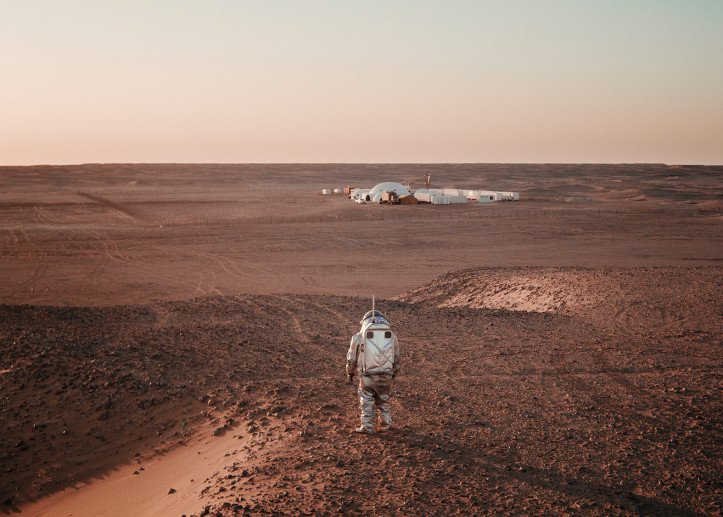
In 2018, a Martian base was created in the middle of the Dhofar desert where, over four weeks, analogue astronauts practised walking, took rock samples, grew plants and conducted experiments.
From above, the domes look like lumps of white cheese with a clear sieve pattern; one large and five small ones, tightly connected with grey tunnels. Around them the bright rectangles of containers and Ziesel electromobiles – armchairs on caterpillar tracks – moving between them. Each has a basket for samples. They are driven by sweating, lumbering drivers, dressed in bulky, silver suits with glass spheres on their heads.

The Aouda.X spacesuit is covered with a skin of Kevlar and Panox, a special thermally-stabilized fibre. Its aluminium surface gleams in the sun. It is extremely tough. Nothing gets through it; not a bullet, nor space dust, nor a scream. It weighs nearly 40 kilograms and there is no way to put it on unaided. For who will tighten the screws on the neck? Who will check it is airtight? Who will ensure the round collar is correctly set; screw on the CO2 filter? It all takes time. Putting on the Aouda.X takes two hours. This is how the day starts. Locked in their spacesuits as if in a capsule, the analogue astronauts walk around the stony surface every day. Very slowly, one step








